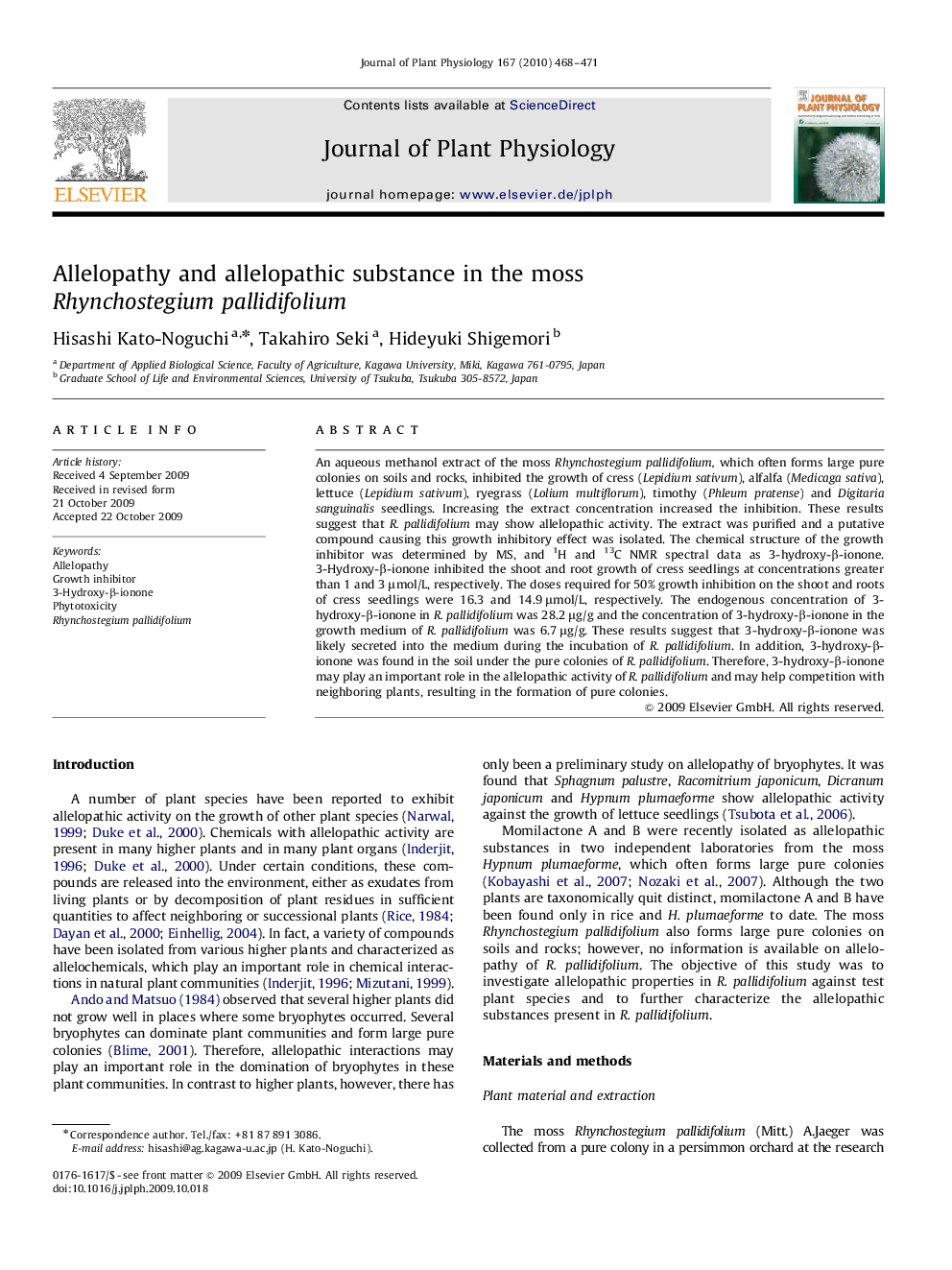| کد مقاله | کد نشریه | سال انتشار | مقاله انگلیسی | نسخه تمام متن |
|---|---|---|---|---|
| 2057075 | 1075860 | 2010 | 4 صفحه PDF | دانلود رایگان |

An aqueous methanol extract of the moss Rhynchostegium pallidifolium, which often forms large pure colonies on soils and rocks, inhibited the growth of cress (Lepidium sativum), alfalfa (Medicaga sativa), lettuce (Lepidium sativum), ryegrass (Lolium multiflorum), timothy (Phleum pratense) and Digitaria sanguinalis seedlings. Increasing the extract concentration increased the inhibition. These results suggest that R. pallidifolium may show allelopathic activity. The extract was purified and a putative compound causing this growth inhibitory effect was isolated. The chemical structure of the growth inhibitor was determined by MS, and 1H and 13C NMR spectral data as 3-hydroxy-β-ionone. 3-Hydroxy-β-ionone inhibited the shoot and root growth of cress seedlings at concentrations greater than 1 and 3 μmol/L, respectively. The doses required for 50% growth inhibition on the shoot and roots of cress seedlings were 16.3 and 14.9 μmol/L, respectively. The endogenous concentration of 3-hydroxy-β-ionone in R. pallidifolium was 28.2 μg/g and the concentration of 3-hydroxy-β-ionone in the growth medium of R. pallidifolium was 6.7 μg/g. These results suggest that 3-hydroxy-β-ionone was likely secreted into the medium during the incubation of R. pallidifolium. In addition, 3-hydroxy-β-ionone was found in the soil under the pure colonies of R. pallidifolium. Therefore, 3-hydroxy-β-ionone may play an important role in the allelopathic activity of R. pallidifolium and may help competition with neighboring plants, resulting in the formation of pure colonies.
Journal: Journal of Plant Physiology - Volume 167, Issue 6, 15 April 2010, Pages 468–471